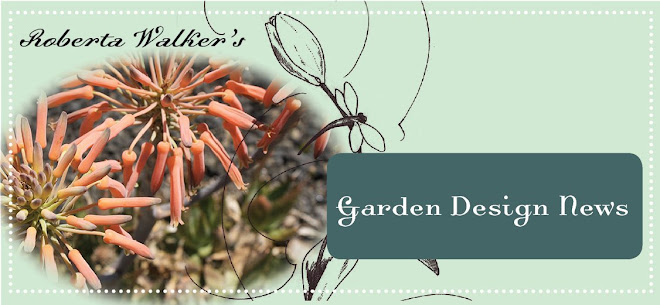Did you know that many of the plants in your landscape are actually herbs and have medicinal qualities? Most of them make delicious teas…
Let’s start with the common landscape/drought tolerant plant:
Lavender: Lavender is good for women’s and children’s health, nervous system conditions, pain relief and it is also a great herb for the skin. Many companies are now selling lavender seed heads to scent the laundry while drying; packets to throw in the bath and many organic cleansers use pure lavender oil. According to the book Growing 101 Herbs That Heal, lavender can be used for a myriad of things: an infusion, tincture, cider vinegar tincture, syrup, compress, poultice, elixir, ointment, salve, cream, balm foot soak, sleep pillow, bath herb, infused oil, honey, butter, suppository liniment, and insect repellent.
Passion Flower: This is a vine: This vine will take off, reaching heights of 30 feet! Be careful where you plant it because it will invade and climb trees. Passion Flower is a strong sedative and a nervine. It can be used an infusion (tea), to make a syrup, a compress, foot soak or for the bath. Use flowers, fruit and top leaves, fresh or dried.
Lemon Verbena: This shrubby plant smells like lemon candy and makes a delicious tea! It is frost tender, so make sure it gets some protection during the winter. Mine is in the back corner of the garden and has made it through the winters so far. You can use it as a calming digestive tea and as a calming sleep herb. It is also a common ingredient in herbal insect repellents. Use the leaves and flowers fresh or dried.
Dandelion: I know, they’re weeds! However…it is considered a whole-body tonic and medicinal action in nearly every body system! It is especially recognized for it’s benefit to the liver, urinary tract, and skin. If you don’t want their weediness in your garden though, you can buy bunches of dandelion greens at the market.
Feverfew: This is not traditionally a landscape plant. Mine came as a gift from some bird or the wind (?) But when it’s in bloom, it’s full of little daisy-like flowers, white with yellow middles. I like using them in flower arrangements. Medicinally, Feverfew is used primarily to treat headaches – especially migraines. You can make a tea with it, an apple-cider vinegar tincture, syrup, medicinal food or a balm.
Purple Cone Flower: Not only is this perennial lovely in the garden with it’s big purple flowers and dark centers, but it’s also great for colds and flu, immune support, and respiratory and skin conditions. Look for it in tinctures or combined with other supplements at Trader Joe’s and Whole Foods.
A few more common garden herbs:
Rosemary – an antioxidant
Oregano – an antiseptic for the skin
Nepeta – Catmint (your cat will love it) but is also considered a sedative and is good for colds and flu.

Growing 101 Herbs That Heal: Gardening Techniques, Recipes and Remedies, by Tammi Hartung
Wise Concoctions: Natural Elixirs and Tonics for Health and Energy, by Bonnie Trust Dahan
Rosemary Gladstar’s Family Herbal: A guide to living life with Energy, Health and Vitality, by Rosemary Gladstar








